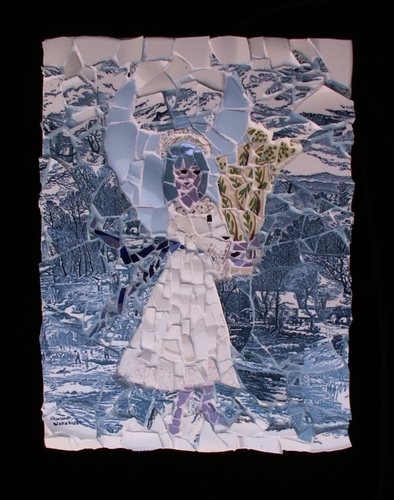WESTMINSTER WEST — I love sending holiday cards, even though a lot of the task is rote - a bit like assembly-line work. I could do that rote part more efficiently if I'd just get organized.
My problem is that I have multiple lists. I have my address book - that one is alphabetical. I print from the computer a list of everyone I'd like to send a card to, many of whom I haven't bothered to put in my address book because I already know their address, or because it has changed and I've only noted it on my printed-out list from last year.
So that makes three lists: address book, last year's printed list, and this year's printed list. They all add steps to the assembly line.
I start with the address book. I write, one by one, in alphabetical order, each person's name and address on a card. I do so over time. I think of each person as I write name after name on the cards.
The next step is the current printed list. Since that one is not alphabetical but organized by either location or relationship or association, I have to compare it to the ones I've already done.
Card by card, I check off the friend on the printed list. That's tedious and the part I could improve immensely by just alphabetizing it. If only I would.
Next, I look through that printed list for people without a checkmark and add those names to cards, often having to refer to last year's printed list for corrected or new addresses.
At that point I have a pile of cards with names and addresses.
* * *
Then it's sticker time. I pull out my sheets of return address labels from charities I've donated to. (I tend to choose charities by whether they send return address labels with their requests.)
One by one, I go through the pile of cards, sticking the return addresses onto them. I try to pick ones that match the people when I can - people with pets get Humane Society; people who like the ocean get the ones with the seashore motif (I can't remember which charity those are from).
Some folks get Amnesty International; some get Doctors Without Borders. The Salvation Army sent nice candles and holly this year. Dana Farber has children's drawings, which are great for families. The Jimmy Fund has flowers - who doesn't like flowers? If nothing quite fits, I use generic ones.
Picking the labels adds a special spark of interest to the process and once more lets me spend a little time with each of my friends, reminding me who they are and what they care about.
* * *
Then comes the best part. I sit with the pile of cards next to me and pick them up, one by one. I hold the card in my hands, read the name and think about that person, my friend.
I picture them as I've known them over the years; I think of their passions and interests and activities; I picture them in the place they live; I remember things we've done together, times we've had together, the meaning of our friendship.
And then I write them a note.
Sometimes the note is something I want to say to them but haven't had the chance lately. Sometimes it relates to something we've shared or something going on in their lives.
Sometimes the note is just a simple greeting - but a greeting I hope they know is written with only them in mind when I write it. As I put the words on the card, the image of that person and my relationship with them is front and foremost in my mind.
I love this chance to visit remotely with the people I care about. It's a three-fold visit: the first with a nod, the second with a smile, and the third with a personal connection.
Well - actually, it's a four-fold visit.
When I'm done, I pull out my roll of stamps and ready them all to go into the mail.
“See you later,” I say with a little wave. “Thank you for being my friend.”
